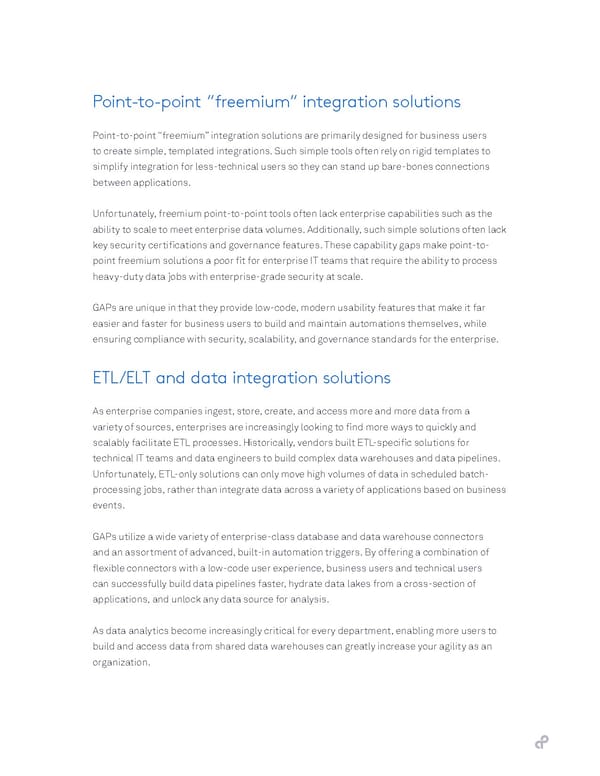Point-to-point “freemium” integration solutions Point-to-point “freemium” integration solutions are primarily designed for business users to create simple, templated integrations. Such simple tools often rely on rigid templates to simplify integration for less-technical users so they can stand up bare-bones connections between applications. Unfortunately, freemium point-to-point tools often lack enterprise capabilities such as the ability to scale to meet enterprise data volumes. Additionally, such simple solutions often lack key security certifications and governance features. These capability gaps make point-to- point freemium solutions a poor fit for enterprise IT teams that require the ability to process heavy-duty data jobs with enterprise-grade security at scale. GAPs are unique in that they provide low-code, modern usability features that make it far easier and faster for business users to build and maintain automations themselves, while ensuring compliance with security, scalability, and governance standards for the enterprise. ETL/ELT and data integration solutions As enterprise companies ingest, store, create, and access more and more data from a variety of sources, enterprises are increasingly looking to find more ways to quickly and scalably facilitate ETL processes. Historically, vendors built ETL-specific solutions for technical IT teams and data engineers to build complex data warehouses and data pipelines. Unfortunately, ETL-only solutions can only move high volumes of data in scheduled batch- processing jobs, rather than integrate data across a variety of applications based on business events. GAPs utilize a wide variety of enterprise-class database and data warehouse connectors and an assortment of advanced, built-in automation triggers. By offering a combination of flexible connectors with a low-code user experience, business users and technical users can successfully build data pipelines faster, hydrate data lakes from a cross-section of applications, and unlock any data source for analysis. As data analytics become increasingly critical for every department, enabling more users to build and access data from shared data warehouses can greatly increase your agility as an organization.
 IT Buyers Guide Page 6 Page 8
IT Buyers Guide Page 6 Page 8